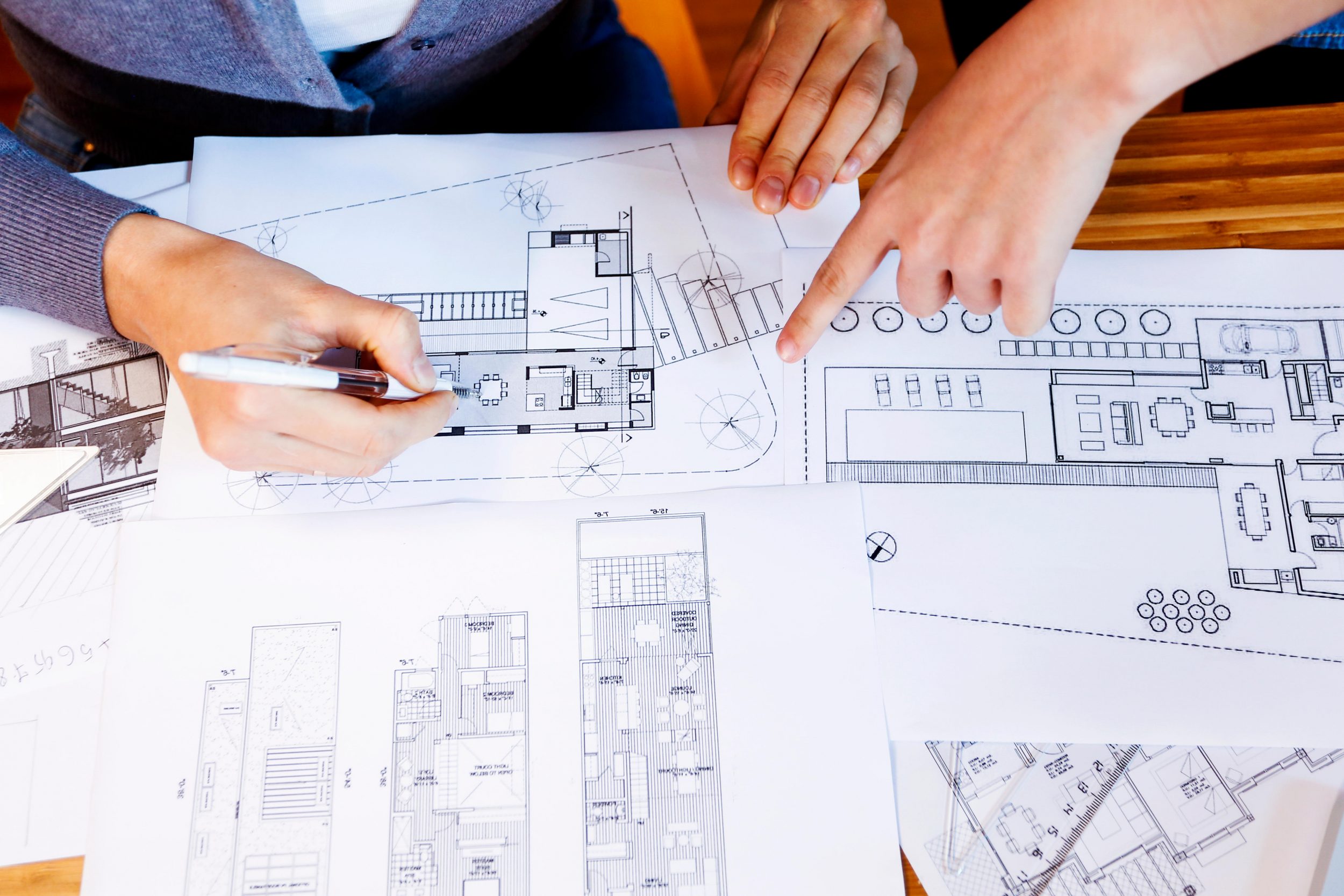10 tips to cement a brilliant and productive working relationship with your builder, architect or designer
Having a great working relationship with the people you trust to transform your home is essential – we spoke to some of Britain's best architects, builders and designers to get their tips on how clients can get the most out of the process.


From Charles I and Inigo Jones to Country Life founder Edward Hudson and Sir Edwin Lutyens, collaborative partnerships are at the heart of some of Britain’s most beautiful buildings.
Such pairings are as vital today as they were then and shared vision, good communication and trust remain at the heart of achieving the best possible outcome. Here are 10 ideas to ensure the success of your project, as revealed by designers, gardeners and craftsmen.
Good chemistry is paramount
Find professionals you like. ‘Trust your instincts – if you don’t like somebody at first meeting, save yourself the hassle and don’t hire them,’ advises John Tehan, director of Smallwood Architects. ‘Will you feel comfortable with this person sitting at your elbow in wellies on a muddy building site or is he the pompous type who might end up marching all over you?
‘If you understand and respect each other at the outset, you will be more likely to be the right people to work together.’
Devote your time to the project
‘Something I hear a lot at the moment, from both architects and contractors, is that clients don’t necessarily understand that they need to devote time to their project,’ says architect Marc Deaves, who points out that building or refurbishing a house is a very personal thing.
‘It’s only a beautiful house in the eye of the beholder,’ he says. ‘The process the architect goes through with the client is actually understanding the client’s needs, exploring the wish list and expanding the possibilities. It’s only by going through the design development process together that you actually get to a solution you’re going to like.’
Recognise that there will be decisions to be made by you throughout the project and that it’s crucial that they’re made on time.
Sign up for the Country Life Newsletter
Exquisite houses, the beauty of Nature, and how to get the most from your life, straight to your inbox.
Know what you want
‘A good client is somebody who has a clear idea of what they want and who is also prepared to listen to the input of a good professional,’ advises John Tehan. Brief your architect with images of houses you like and a wish list of requirements and rooms.
The same applies to interior and garden designers. ‘The clearer you can be about how you want to use the garden and what you want to include, the easier and more successful the process will be,’ advises Graham Lloyd-Brunt of Lloyd Brunt Outdoor Design.
Give them some space
A client’s lack of trust in the professional services they’ve hired makes for a miserable experience all round. Brief your architect, then allow them space to look at the site.
Their job is to consider the best spot for morning coffee or to enjoy a sunset view, the quietest side of the house for bedrooms or how to make the most of a view of the landscape you didn’t expect at ground level. Give them a chance to come up with imaginative ideas, clever solutions and glorious design.
Consider the consents
‘Sometimes, clients are so desperate to move in and sit around the table having breakfast that they forget about whether they’ve got planning consent or whether they’ve dealt with the dry rot,’ says Marc Deaves. ‘It can take 12–18 months to negotiate consents and, of course, it’s illegal to carry out works to a listed building without having them in place. I can’t emphasise enough that time spent in advance planning is hugely valuable.’
Avoid changes
Don’t keep changing your mind. If it’s annoying for the professionals, it’s worse for you, because you can lose control of costs by making changes as the job progresses. The contracted fees no longer hold and costs can spiral, untrammelled by prior agreement.
There’s also a sequence to the way works are carried out: all building contracts run to a prescribed length of time and if the contractor doesn’t proceed with due speed, the client can counterclaim. Once you instruct changes and disrupt the programme, you are no longer able to do that, so you can lose control of the schedule as well.
Don’t make unrealistic demands
‘Good suppliers are busy, lovely things have long lead times and antiques must be found,’ notes interior designer Henriette von Stockhausen of VSP Interiors. ‘They can’t be rushed.’
Agree the schedule
A good builder will provide an accurate and detailed programme and progress will be regularly measured against it. Don’t pressurise them into cutting it down because it may not work out well. ‘Look into the logic and have grown-up conversations about it,’ says Nigel Armstrong, chairman of building firm R. W. Armstrong. ‘Don’t hack eight weeks off the end in order to get in for Christmas.’
Be nice
‘Speak to the workers on site. Engage with them. Your interest will be appreciated and rewarded,’ says Nigel.
Don’t panic
There may be a point when the wallpaper or worktop arrives on site and you suddenly fear you don’t like it. ‘It’s at this point that you need to really trust your designer, because the sum of a scheme is so much more than its parts,’ says Henriette.
‘If you panic and pluck elements out of the design, it will have an impact on the overall interior – you won’t see it come together as a whole.’
Country Life is unlike any other magazine: the only glossy weekly on the newsstand and the only magazine that has been guest-edited by HRH The King not once, but twice. It is a celebration of modern rural life and all its diverse joys and pleasures — that was first published in Queen Victoria's Diamond Jubilee year. Our eclectic mixture of witty and informative content — from the most up-to-date property news and commentary and a coveted glimpse inside some of the UK's best houses and gardens, to gardening, the arts and interior design, written by experts in their field — still cannot be found in print or online, anywhere else.
-
 Folio, Folio, wherefore art thou Folio? Shakespeare set to be auctioned by Sotheby's
Folio, Folio, wherefore art thou Folio? Shakespeare set to be auctioned by Sotheby'sFour Folios will be auctioned in London on May 23, with an estimate of £3.5–£4.5 million for 'the most significant publication in the history of English literature'.
By Lotte Brundle
-
 Damon Hill's former home in Marbella is the perfect place to slow down
Damon Hill's former home in Marbella is the perfect place to slow downThe glorious Andalusian-style villa is found within the Lomas de Marbella Club and just a short walk from the beach.
By James Fisher